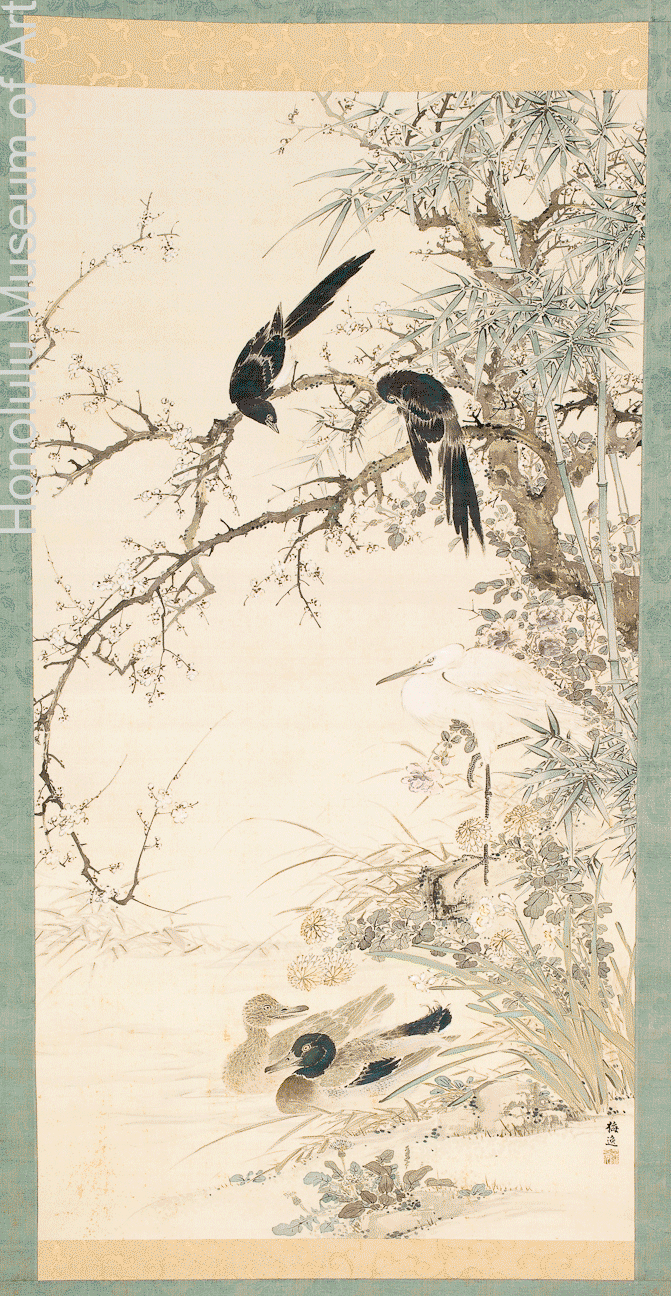 |
 |
 |
 |
 |
 |
 |
 |
Nanga and Literati Painting
Literati painting is an artistic practice of Chinese origin that became prominent during the Yuan dynasty (1271–1368). Highly educated Confucian bureaucrats and scholars who comprised a distinct social class in Southern China used poetry, calligraphy, and painting as a means of expressing their understanding of Confucian principles and of expediting their own moral development. When this painting style developed popularity among Japanese artists during the Edo period (1615–1868), it came to be known by the Japanese terms Nanga (“southern pictures”) or Bunjinga (“literati pictures”).
In their landscape paintings, these scholar-artists eschewed the realism and academic techniques that typified professional court painting in China at that time. Instead, they adopted a self-consciously amateur style: calligraphic line-work and unrestrained use of ink washes. This expressive, individualistic painting style, through which they sought to express their moral integrity, was complimented by–and often belied–the artists’ extensive training in the handling of an ink brush and their intimate knowledge about the history of Chinese painting.
Japanese artists often developed an interest in the literati style through their study of various aspects of Chinese culture, including poetry, calligraphy, painting, Confucianism and Chinese history. The Tokugawa Shogunate, which ruled Japan throughout the Edo period, actively encouraged such study. Access to such information was facilitated by native Chinese teachers, especially the priests of the Huangbo (Japanese: Manpuku) sect of Buddhism, who immigrated to Japan and founded Manpukuji temple, located south of Kyoto, in 1661. Other sources of information about literati painting included printed manuals, most notably the “Eight Different Picture Albums” (Japanese: Hasshu Gafu) and the “Mustard Seed Garden Painting Manual” (Japanese: Kaishien Gaden), as well as actual paintings by artists active during the Ming (1368–1644) and Qing (1644–1912) dynasties.
It is important to note that, in Japan, literati painting was not associated with a distinct social class, as it was in China. Since there was no scholar-bureaucrat class in Japan, the movement was embraced as a pictorial style by painters from a wide range of socio-economic backgrounds. Furthermore, while Chinese literati focused upon a narrow range of acceptable subjects and styles, Japanese painters explored beyond the limits of that codified framework, experimenting with various colors (including gold), techniques, and subjects not found in the work of Chinese literati painters. Free from the self-imposed restraints that characterized the movement in China, both professional and amateur Japanese painters used the literati style to suit their own purposes and thereby imbued the movement with an unexpected sense of vitality.
– Charise Michelsen

